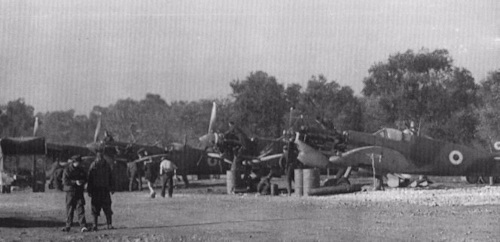Already in the four-year period 1940/1943, when the Kingdom of Italy was still an ally of the Great National Socialist Reich, the Regia Aeronautica was able to get its hands on some Spitfire English.
The first time was in February 1941, when a reconnaissance model made an emergency landing near Pisa. Following another crash landing, the Regia Aeronautica came into possession of a Spitfire Mk.V in Marina di Ragusa in August 1942. Later an aircraft of the same type was forced to land in the same area after a fight with some fighters Italians.
After having come into possession in such a daring way, however, the Regia Aeronautica never used the specimens of the English fighter it had come into possession of, unlike what it did with other Allied models (For example, the Dawotine French).
The Italian Air Force will begin operationally using it Spitfire only from May 1944, after the armistice of September 8, 1943 and the change of alliances alongside the Allies against Nazi Germany.
To the Regia Aeronautica of what will go down in history as "the Kingdom of the South", called in English ICAF (Italian Co-Belligerent Air Force, although it is an unofficial designation - ed), several Anglo-American aircraft were thus assigned, including 53 Spitfire.

They were essentially Spitfires of the "Mk.Vb" and "Vc" versions coming from the RAF and USAAF departments employed in the Mediterranean to which other specimens from the Belkan Air Force and by the free French and Greek forces who fought together with the Allies. For this reason, the Spitfire in question they had the typical English and American camouflage expected for use in said operating theater.
However, the transfer to the Regia Aeronautica involved the cancellation of the pre-existing insignia and codes and the new painting of the aircraft with British type “S” and Italian synthetic paints available at the time. As a result of this "treatment" of the original schemes, nothing remained.
Despite the generous repainting, they were still very worn planes from the previous use. In fact, only 33 of the 53 aircraft received by the Regia Aeronautica were actually put into service in the 20 ° Group of the 51 ° flock which then operated at the Canne della Battaglia airport with a detachment at the Lecce - Galatina airport (where now the 61st wing is based - ed). The flight group thus carried out the first of many other war missions with the new airplane in October 1944 after completing the necessary training process. These were mainly escort missions, ground attack and reconnaissance on the Yugoslav territory (also and above all, with good probability, to avoid possible deadly fratricidal engagements with colleagues of the Republican National Air Force of the RSI - ed).
The Spitfires were lucky enough to carry out the last war mission of the Regia Aeronautica in II GM in May 1945, carrying out a tactical reconnaissance over Zagreb.
 With the end of hostilities only 15 remained in service Spitfire, of which only 10 in full efficiency following such intensive use on machines already tested themselves.
With the end of hostilities only 15 remained in service Spitfire, of which only 10 in full efficiency following such intensive use on machines already tested themselves.
It was therefore necessary to acquire other aircraft as part of the more general reorganization of the post-war Air Force. This resulted in the acquisition of others Spitfire, this time in the Mk IX version, which were taken over by the nascent Air Force starting from 24 July 1947.
Even in this case, however, it was a question of "waste". Specifically, these "new" Spitfire they were nothing more than aircraft that the RAF transferred to AMI already present on Italian territory. Specifically, it was 80 Spitfire Mk.IX "forgotten" on Treviso - San Giuseppe airport. These were later joined by other examples of different versions: 99 LF Mk.IX and 11 HF Mk.IX. Also in this case they were "stock funds" already struck by the British.
With these further additions the total of Spitfire with the Italian insignia there were about 154 and mainly operated with the 5th and 51st flocks but also with other departments until June 1948, the date on which it was decided to ground them due to the countless structural problems that contributed decisively to ensure that the Italian pilots did not have a very good opinion of the aircraft assigned to them.
Notably, among the other departments that worked with the Spitfire SRAM must be reported (Aircraft and Engine Repair Team - ed) of Rome Guidonia, forerunner of the modern Experimental Flight Unit, who used it to carry out clandestine reconnaissance missions on the Yugoslav and Albanian territory in November 1947 with departure from the aforementioned Lecce - Galatina airport.
Airport grounds which naturally lent themselves to covering similar activities as it already housed other similar British aircraft as part of its Flight School.
Photo: Aeronautica Militare












